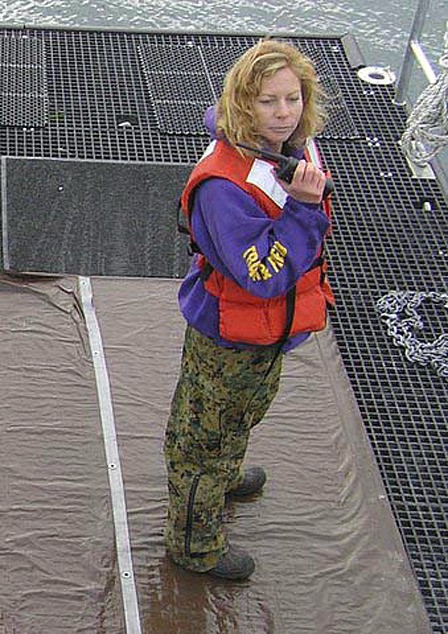The white sand beach stretched for miles.
With rows of condominiums facing the water and tourists strolling along the shore, it looked like a postcard of Florida.
But as Julie Knight got closer, she saw tar patties and mats of oil, baking in the summer sun.
“When we saw waves breaking on the shore, we’d see tar balls all through the waves, not just sitting on the surface,” Knight said. “You would look at the surface of the water and you wouldn’t know how much oil was in it.”
Knight, who lives on Lopez and is director of the Islands Oil Spill Association, was in the Gulf of Mexico region for nearly a month to help capture birds affected by the BP oil spill. She was joined by Lopezian Sam Pottenger, San Juan resident Sharon Massey, and Orcas Islander Amy Lum. All four are back at home; Orcas residents Libby Cook and David Lynn took their places.
IOSA, which is based in Friday Harbor, was asked by the International Bird Rescue Research Center (IBRRC) to provide trained search and rescue responders. The IBRRC was contracted by Tri-State Bird Rescue, which is working directly for BP. IBRRC paid for all of their expenses. Knight left on June 12.
“We covered Mississippi, Alabama, the West side of Florida, and what they call ‘Flora-Abama,’” she said. “We’d start at 10:30 in the morning with a conference call and safety meeting, then went to surveyed areas, and then we were on-call for the BP hotline for bird sightings.”
The crew worked until midnight, chasing leads from community members. Knight says they did a great deal of driving, asking for directions, and hiking through terrain in intense humidity and heat. After the birds were caught, they were taken to a treatment facility.
“There was a lot of variability,” she said. “Some birds had oil all over their bodies, but we had more birds who had spots of oil on them or a ring around their neck. Some of the seabirds we found were probably oiled farther offshore, while pelicans, laughing gulls and shore birds, that were closer to shore, were less oily … most of these beach areas are lined with condominiums, and then there would be a tern colony, with eggs in the nests, in a vacant lot between two condominiums.”
As a spill responder for the last 22 years, Knight says the BP spill is different from anything she has seen, primarily because the source is underwater and still pumping.
“The amount is huge, but when you look at the area, there are fewer birds than we expected to see,” she said. “Part of it is that a lot of birds have migrated this time of year, and some of the birds that were off shore may have been impacted by the oil but were not in a place where people would see them. Because you’ve got a constant source, you never know if there is fresh oil coming. The tide pushes oil in, then pulls away, and some of the oil goes somewhere else. This is not predictable … compared to the smaller Exxon Valdez spill, where there was a finite amount of oil and you could see where most of it was.”
Lum, a 15-year IOSA volunteer, says one of her objectives was to bring back knowledge that would help with a local oil spill.
“It was great to work with organizations like IOSA and IBRRC and to be a piece of a big response effort,” Lum said. “Everybody’s job really counts.”
Knight says that unlike what is being reported by news outlets, she found the level of organization astounding. One area that she encountered had 25,000 people working on clean-up. Both day and night shifts were staffed, and there were several staging areas with equipment, security guards, porta-potties, and medical personnel standing by.
Knight was also surprised by the locals.
“Every call we got was from concerned community members,” she said. “They were so nice and gracious, and sometimes really sad, especially those who lived there. They wanted to talk about it.”
She remembers one group of “tough-looking contractors” who were working on clean-up. They had become attached to an injured heron, and didn’t want to see him go.
“They said, ‘we all named him, we’re looking out for him. We would really miss him if you took him,’” Knight said.
Lum shared a similar experience.
“I was down there helping the birds, but the connection with the people who live there was great … everyone was really pleased to see something being done in the middle of a big disaster,” she said. “People from all over the place came to help, and it really mattered to them (the local communities).”
What’s next
It’s likely Knight will return to the Gulf in August for a different type of assignment – she is not sure what that might be. IOSA is working with already-trained responders who need just a few more HAZWOPER hours and/or refresher training for bird search-and-rescue. Training for those who are not IOSA volunteers is tentatively set for September. Call 378-5322 or e-mail iosaoffice@rockisland.com for info.




